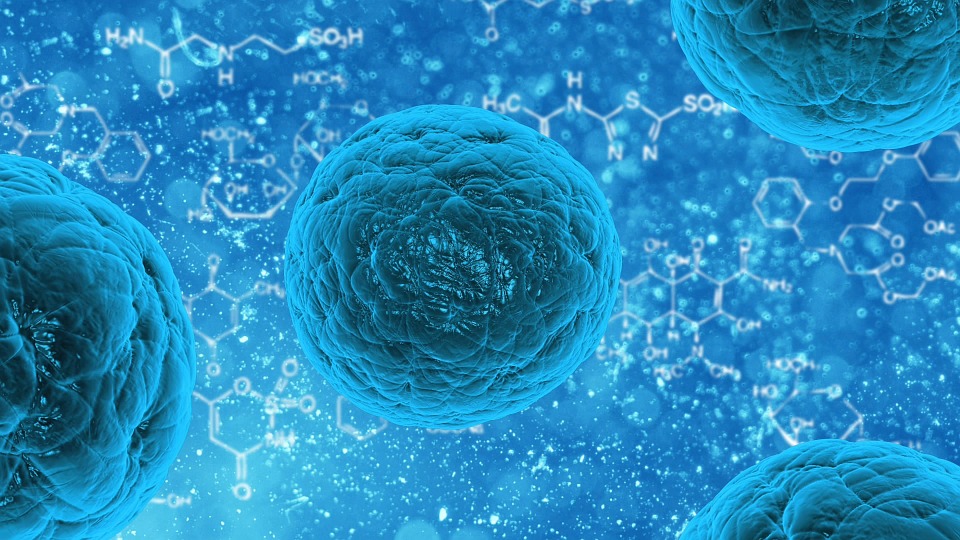Nanotechnology in Biology?
Nanotechnology is a unique and relatively new field of science. Simply put, it is the study and manipulation of materials on the nanometer scale. Nanotechnology is a far-reaching discipline, for example, there exists nanotechnology that utilizes chemistry to produce molecular motors that power nano-cars or mechanically breakthrough cell membranes. In 2016 a team of scientists created a small nanobot to aid poorly motile sperm in their ability to inseminate an egg. Yikes, am I right? If you see this video and you’re me you immediately imagine the year 2080. Elon Musk’s accidentally created A.I. overlord is in its 17th term and has relocated the entire military budget of the USA to mobilizing flying killer robots that, using such nanobots, impregnate the world producing a legion of half human half robot tesla driving cyborgs (Note this plot line is my intellectual property, hands-off). Or the more optimistic reader’s may envision a world of safer less invasive artificial insemination for hopeful couples who want their own little poopy humans. I know what you’re thinking, Dylan you are two hundred and ten words in and have not related this to cell physiology at all; did you even read the syllabus? The answer is no, I didn’t, but be prepared to be as surprised as I was when I discovered that nanotechnology has found a home in cell development, specifically in stem cell differentiation and growth.
Quick Review of Stem Cells!
Stem cells are undifferentiated cells with the possibility of becoming multiple different cell types. Types of stem cells include somatic stem cells, embryonic stem cells (ESC), and induced pluripotent stem cells (iPSC). If you are reading this I am 99.9% sure you are a UNBC student in Biology 312 or you are Dezene Huber (@docdez) and are teaching Biology 312. In both those scenarios, I would hope you understand what those terms mean. However, since this is an all-inclusive blog post I would love to fill the 0.1% of the readers in. Simply put somatic stem cells are adult stem cells which are stem cells that are specific to an organ in your body and can become any cell type in that organ. This is something us snobby scientists like to call multipotent. This multipotent ability is good because it allows your organs to have some regenerative ability. ESCs and iPSCs have the ability to become any cell types from any organ, which is referred to as pluripotent. The difference between these two is that ESCs come from embryos while iPSCs come from taking a normal adult cell and inducing pluripotency through science magic. I am not going to explain this science magic here but feel free to read the Nobel Prize-winning paper.
The Difficulties of Stem Cell Differentiation!
These properties of stem cells make them quite the hot commodity in medicine, especially in regenerative medicine, where stem cells differentiated and grown in a lab for medical purposes. Stem cell differentiation is reliant on chemical and physical cues. Differentiating stem cells in a laboratory setting is very difficult as they are extremely sensitive to environmental cues and changes in medium, temperature, and pressure, which can change cell fate. However, the largest hurdle in stem cell differentiation has been the three-dimensional growth and differentiation of the cells. It does not take a long time to realize that a petri dish and your body are two very different environments (if this is not the case for you please consider consulting a doctor or better yet web MD). Three-dimensional growth is especially important when working with hematopoietic stem cells (HSCs) and mesenchymal stem cells (MSCs) which are adult stem cells that can differentiate into bone, as well as many other structural and non-structural tissues. Proper growth when trying to regenerate structural organs is very much dependent on recreating in vivo environment in vitro within the lab. This is where nanotechnology comes in to save the day.
Is Nanoscaffolding The Answer?
Nanoscaffolding is a technique that allows for the three-dimensional growth of cells. The essential concept around nanoscaffolding is that a three-dimensional medium, made from small nanofibers, can be created. This structure then supports stem cell proliferation in all directions for the proper formation of three-dimensional structures. This blog previously mentioned the idea of “physical cues” and stem cells being “sensitive to the environment” but it is important to really understand to what extent this is true. Cells growing in a three-dimensional space are able to detect and create small forces in relation to their environment. One can get lost in the many different types of nanofibers used as scaffolds such as collagen nanofibers, carbon nanofibers, carbon nanotubes, to name a few. For the remainder of this blog, we will discuss graphene/graphene oxide nanofibers as they are most interesting to me and I’m writing this blog post so I make the rules.
Graphene and graphene oxide scaffolds have shown great promise in bone regeneration. In the differentiation and growth of bone, it is common to use a growth factor known as BMP-2 (bone morphogenetic protein) to aid in the formation. However, MSCs differentiation into bone cells has seen to be accelerated on graphene nanofibers without the use of BMP-2! It is hypothesized that it is the structural components of graphene such as its flexibility combined with rigidness and its ability to withstand lateral stress were key components aiding in differentiation. In addition to this graphene is a relatively cheap material allowing it to be scaled to any size necessary and its influence has been shown to be specific to MSC, leaving other stem cells unaffected. All these qualities make graphene scaffolds a viable option for in vivo bone regeneration.
In Conclusion
Nanotechnology is a new and adaptive field of science that can be applied in many fields. It is often easy to look for purely biological answers to biological question but applying outside ideas and materials may provide surprising results. Nanotechnology in stem cell differentiation is just one of them.


Recent Comments